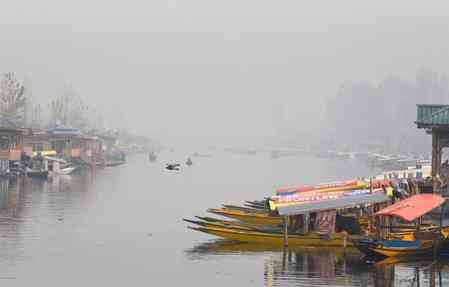Climate Change Leads to Extreme Weather Across the Globe
Developed countries are rushing to break their own development records across various sectors, including the automobile industry, chemical industry, and food processing industry. This urgency is driven by population explosion, increasing vehicle demand, and large-scale deforestation for infrastructure development, such as multi-story housing projects and highways. In the agriculture sector, excessive use of fertilizers is contributing to increased production.

Developed countries are rushing to break their own development records across various sectors, including the automobile industry, chemical industry, and food processing industry. This urgency is driven by population explosion, increasing vehicle demand, and large-scale deforestation for infrastructure development, such as multi-story housing projects and highways. In the agriculture sector, excessive use of fertilizers is contributing to increased production.
Environmental scientists have long predicted that climate change will lead to significant disruptions in various regions, resulting in excessive rainfall, extreme heat, severe cold, and glacier melting. These changes are already causing natural calamities such as flash floods, which bring life to a standstill in developed countries. Rising sea levels are also anticipated in the coming years.
In mountainous regions, efforts to expand national highways from two lanes to four lanes have led to the extensive cutting of trees and mountains for residential townships and hotels. Human development projects that disregard natural balance will inevitably face repercussions, including natural calamities in these areas.
Infrastructure development, particularly road construction, is proceeding at a revolutionary pace. However, this progress comes at a significant environmental cost, with millions of trees being cut down. The replacement rate of new saplings is slow compared to the rate of deforestation. People are beginning to feel the adverse effects of tree loss and are reconsidering their decisions, now choosing to plant saplings near their homes. Government initiatives to use technology for relocating mature trees could have mitigated this issue, as saplings take years to mature into trees.
It is now imperative for political leaders and social reformers to call on the public to plant at least one sapling each year and nurture it until it becomes a mature tree. Notably, Peepal and Bodhi trees release oxygen round the clock, unlike other trees that release oxygen only during the day and carbon dioxide at night. To maintain ecological balance, the Forest Department should prioritize the plantation of Peepal trees.
Tree shade helps keep the environment pollution-free and cools the surroundings during extreme heat. The government should encourage the planting of fruit-bearing trees, which provide shade, shelter for birds, and food for both birds and insects.
A policy should be established to plant a large number of saplings along river and canal banks. While cutting trees is easy, planting and nurturing new saplings through a plantation drive is challenging. Success in such initiatives requires the active participation of social organizations and political parties to motivate the masses.
Families could plant a sapling in the name of new children or in honor of their elders. This personal connection could significantly boost the success of tree plantation drives in the coming years.
Authored by:
Rajat Kumar Mohindru,
Journalist,
Jalandhar City.


 Rajat Kumar
Rajat Kumar 









